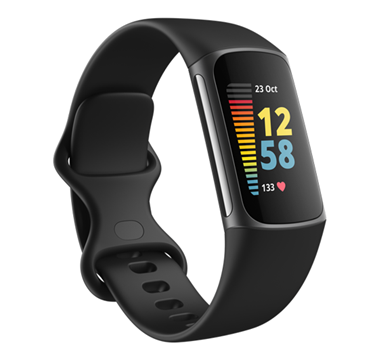Bone marrow is a soft fatty tissue found in the inside of the body's bones - such as the sternum (middle of the chest), pelvis (hip bone), and femur (thigh bone). Fibrous tissue in the marrow supports stem cells, which are large "primitive" undifferentiated cells. As needed, the stem cells differentiate to become a particular kind of cell - a white blood cell (WBC), red blood cell (RBC), or platelet.Only mature cells are normally released from the marrow into the blood stream.
Any disease or condition that causes an abnormality in the production of any of the mature blood cells or their precursors (immature forms) can cause a bone marrow disorder. A variety of things can go wrong, including:
* the overproduction of one type of cell. This crowds out and decreases the production of the other cell types.
* production of abnormal cells that don't mature or function properly
* cell compression caused by an overgrowth of the supporting fibrous tissue network, resulting in abnormally shaped cells and decreased numbers of cells
* one cell line becomes predominant because the cells don?t die at a normal rate
* the underproduction of cells , or the rapid loss of cells because they are fragile
* not enough iron is available to create normal red blood cells (they may be microcytic)
* lymphomas and other cancers that may spread to the bone marrow, affecting cell production and maturation
The Cells
White Blood Cells
There are five different types of white blood cells (WBCs): lymphocytes, neutrophils, eosinophils, basophils, and monocytes. Each plays a different role in protecting the body from infection. Neutrophils, basophils, and eosinophils kill and digest bacteria. As a group they are called myelocytes or granulocytes for the granules that are found inside their cells. Monocytes also ingest bacteria, but they are produced more rapidly than the myelocytes and tend to be longer lived. Lymphocytes exist in the blood and lymphatic system. There are two main types of lymphocytes, T cells and B cells. T cells, which finish maturation in the thymus gland, help the body distinguish between itself and foreign agents. B cells produce antibodies? proteins that attach to specific antigens.
Red Blood Cells
Red blood cells (RBCs) use iron in the form of hemoglobin to carry oxygen to tissues throughout the body.
Platelets
Platelets, which are also called thrombocytes, are actually fragments of cells called megakaryocytes. The body uses platelets in the clotting process to plug holes in leaking blood vessels.
The Disorders
Leukemia, a cancer of the white blood cells, can affect any of the five WBC types. It begins with one abnormal cell that begins to continuously replicate (clone) itself. The resulting leukemic clone cells do not function normally. They do not fight infections, and as they build up they inhibit the production of other WBCs, RBCs and platelets. Patients with leukemia may have frequent infections, fatigue, bleeding, bruising, anemia, night sweats, and bone and joint pain. The spleen, which filters the blood and gets rid of old cells, may become enlarged, as may the liver and lymph nodes.
Myeloproliferative disorders (MPD) are a group of four diseases centered in the bone marrow, and characterized by the overproduction of a precursor (immature form) of a marrow cell. When a particular type of blood cell is needed, undifferentiated stem cells in the marrow begin to change, becoming the immature blast forms of whatever cell is in short supply. These blasts mature to become one of the five types of white blood cells, to form red blood cells, or platelets. Since only fully mature cells normally leave the bone marrow, it usually contains a mixture of cells in various stages of maturity.
In MPD conditions, excessive production of a cell's precursor leads to an increased number of that type of mature cell and an increase or decrease in the number of other blood cells (which may be inhibited and crowded out). This results in symptoms related to blood cell overproduction, shortages, and dysfunction throughout the body.
Myelodysplastic Syndrome (MDS), is a group of diseases characterized by abnormal bone marrow cell production. In MDS, a common feature is that that not enough normal blood cells are being made. This leads to symptoms of anemia, infection, and excessive bleeding and bruising. MDS syndromes are classified by how the cells in the bone marrow and blood stream look under the microscope and include: refractory anemias, Ph-negative chronic myelocytic leukemia, chronic myelomonocytic leukemia, angogenic myeloid metaplasia). Over time MDS tends to progress to acute myeloid leukemia.
Aplastic anemia is associated with a loss of cell precursors (usually RBC), due to a defect in the stem cell producing them, or due to an injury to the bone marrow environment. Some aplastic anemias are caused by exposure to chemicals such as benzene, radiation, or certain drugs. A few are due to rare genetic abnormalities (such as Fanconi's anemia), or associated with an acute viral illness (such as human parvovirus) but for about half the cases the cause is unknown.
Other disorders include:
* Plasma cell disorders, a group of conditions associated with an overproduction of one clone of a B lymphocyte and its antibody protein
* Lymphomas and other cancers that spread into the marrow and affect cell production
* Anemias caused by deficiencies (such as iron) that result in abnormally shaped or sized RBCs
* Anemias caused by a deficiency or dysfunction of erythropoietin (a chemical produced by the kidneys that stimulates RBC production)
Source:
Please rate this
Poor




 Excellent
Excellent




 Excellent
Excellent
Votes: 0 |NaN out of 5






